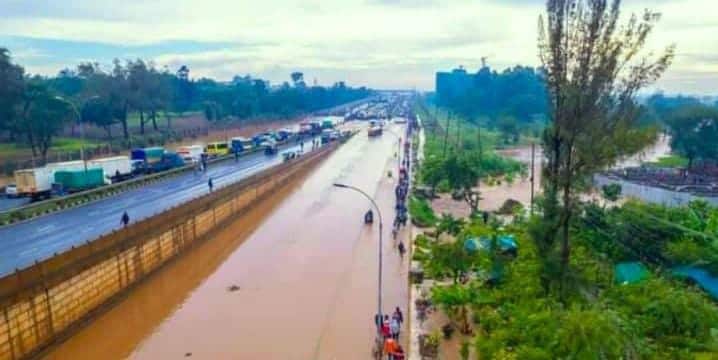
The regions encompassing Kenyatta University and extending towards Kahawa Sukari have been confronted by a persistent challenge: flooding. Situated on the outskirts of Nairobi, these areas, once renowned for their tranquility and abundant greenery, are now besieged by the destructive force of floodwaters during the rainy seasons. The resulting inundation not only disrupts daily life but also poses significant hurdles to residents, businesses, and educational institutions in the vicinity.
The geographical layout of the region, characterized by low-lying areas and insufficient drainage infrastructure, exacerbates the flooding predicament. Kenyatta University’s sprawling campus, bordered by residential neighborhoods and commercial ventures, serves as a focal point for water accumulation during heavy downpours. Additionally, the burgeoning population and urban expansion in the nearby Kahawa Sukari area compound the vulnerability to floods.
The rapid pace of urbanization and unplanned growth have significantly worsened the flooding challenges in this area. The proliferation of informal settlements, often lacking adequate drainage systems and adherence to building standards, has further deteriorated the situation. Furthermore, encroachment on natural waterways and wetlands has diminished the land’s capacity to absorb excess rainwater, resulting in heightened surface runoff and localized flooding.
A critical factor contributing to the recurrent floods is the inadequacy of drainage infrastructure. Many parts of the area lack well-maintained stormwater drainage systems capable of efficiently diverting water away from residential and commercial zones. The prevalence of clogged drains and obstructed waterways exacerbates the issue, leading to waterlogging and property damage even after moderate rainfall.
The ramifications of flooding extend beyond mere property damage, profoundly impacting the lives and livelihoods of area residents. Displacement, loss of possessions, and disruptions to daily routines are commonplace experiences for those residing in flood-prone areas. Moreover, businesses incur economic losses, while educational institutions like Kenyatta University face challenges in maintaining academic operations and ensuring the safety of students and staff.

Efforts to tackle the flooding challenges in the region are underway, albeit with varying degrees of success. Collaborative initiatives involving government agencies, local authorities, and community organizations aim to enhance drainage infrastructure and implement flood mitigation measures. These endeavors include river dredging, waterway clearance, and the construction of retention ponds to manage excess rainwater.
Community engagement is deemed crucial in fostering resilience against flooding. Grassroots initiatives, supported by NGOs and educational institutions, play a pivotal role in raising awareness about flood risks, promoting environmentally sustainable practices, and empowering residents to take proactive measures to safeguard their homes and communities.
Looking ahead, it is imperative to prioritize sustainable urban planning and resilient infrastructure to mitigate the impacts of flooding as the region continues to develop and urbanize. Comprehensive strategies encompassing land-use planning, environmental conservation, and climate change adaptation are essential for long-term resilience. Concerted efforts from government agencies, private sector stakeholders, educational institutions, and residents are indispensable in building a more flood-resilient community in the Kenyatta University to Kahawa Sukari area. In conclusion, the recurring flooding underscores the pressing need for proactive measures to address the underlying causes of the problem.




